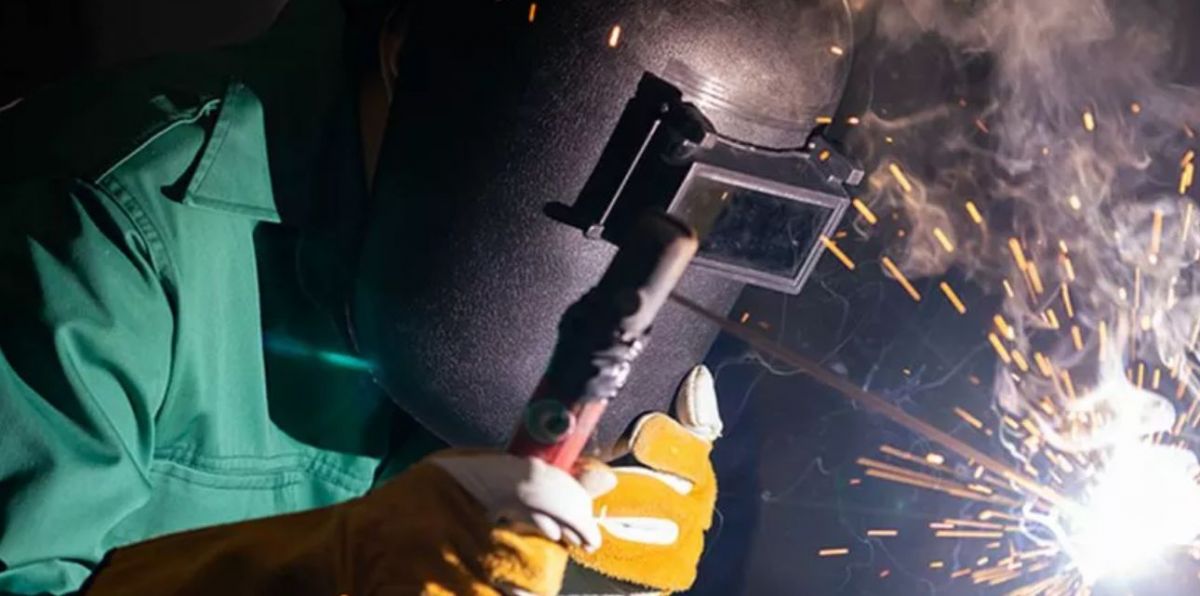TWS is a Great Training Option for Everyone
Learn more about how we can prepare you to advance your career.
Are you creating your workshop and want to know how to choose and use a bench grinder? Good news. This article by Tulsa Welding School explains can help shed some light on bench grinders. For more information about angle grinders we also have another blog article to read.
What is a Bench Grinder?
The everyday use of a bench grinder1 is to sharpen other tools. However, welders use bench grinders to grind, sharpen, or shape materials like metal. The bench grinder is made up of different parts that have unique functions. The parts of a bench grinder include:
The Motor – the speed of the motor determines how the bench grinder is used. The more speed the motor has, the faster it can grind the metal.
Grinding Wheel – most bench grinders have two wheels, a course wheel, and a fine wheel. The course wheel is used for heavy work like shaping metal, while the fine wheel is used for polishing and shining.
Have You Considered a Career in the Skilled Trades?
Fill out the form to recieve a no obligation info packet.
Wheel Guard – used to protect your eyes from pieces of metal or sparks that break off during use. Most of the grinding wheel is covered by the wheel guard.
Tool Rest – a platform on which you can leave your tools when adjusting the bench grinder. The balance needs to be calibrated regularly, as the pressure can create an unbalanced bench grinder.
How Do You Choose a Bench Grinder?
There are different elements you must consider when choosing a bench grinder. They include:
Ease of Use – Find a bench grinder with well-marked buttons that you can use while wearing gloves. You will also need to change the wheels for different uses, so make sure the wheels are easily accessible.
Size – a larger bench grinder is an 8-inch wheel and is much more powerful than a 6-inch wheel. The 8-inch grinder offers more work area and a stronger motor.
Well-Balanced – ensure the bench grinder doesn’t vibrate at high speeds. Vibration makes it harder to grind a straight edge. Bench grinders with larger wheels vibrate less than smaller wheel grinders.
Wheel Material – an abrasive wheel can use different materials, including aluminum oxide, ceramic or aluminum oxide, cubic boron nitride, or silicon carbide.
Power – a bench grinder must have at least 3,000 RPMs2. The harder the materials, the more power you need to grind them.
Variable Speed Settings – you must adjust the speed depending on the job. Slower speeds work well with polishing, while higher speeds help grind and shape metal.
How Do You Use a Bench Grinder?
There are a few tips for using a bench grinder. These tips include:
Tip #1: Safety first. Ensure there is a wheel guard, and you use hand gloves, safety goggles, and other clothing to keep you safe.
Tip #2: You should always keep a pot full of water nearby because grinding metal can cause it to overheat. Dip the metal in the water to prevent it from deforming.
Tip #3: Use pliers to hold small objects so you don’t get too close to the grinding wheel.
Tip #4: Make a guideline for sharpening tools so you don’t hold the tool at the wrong angle and ruin it. Marking common angles can also help save time.
Tip #5: Know when to stop the wheel. A blunt edge shoots sparks downward; however, a sharper edge can make sparks fly upward, so it is essential to know when to stop the wheel, so you aren’t hurt by sparks.
Want to Learn More?
The Professional Welder program at Tulsa Welding School’s Jacksonville, Tulsa, Houston, and Dallas Metro campuses starts by helping you know what it’s like to be a welder in interactive workshop courses and welding booths. You’ll be trained in structural, flux core, and pipe welding in as little as seven months. You’ll also be prepared to excel in job interviews and welding tests for various certifications.
Read about the types of welding careers you can pursue with your skills. Ready to start a Professional Welding program? Contact us today about our welding certification preparation program.







